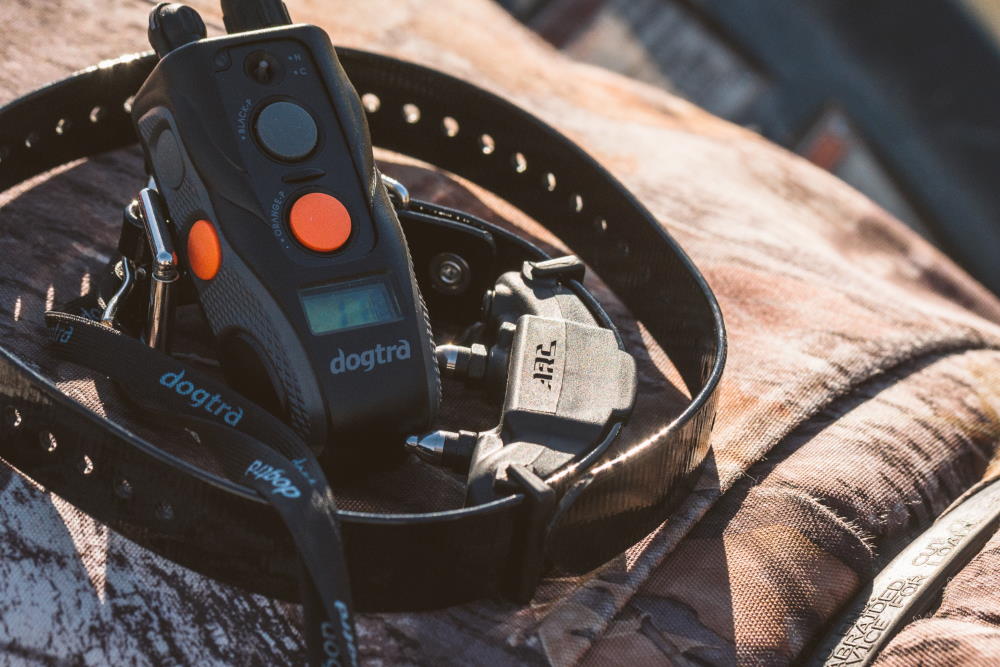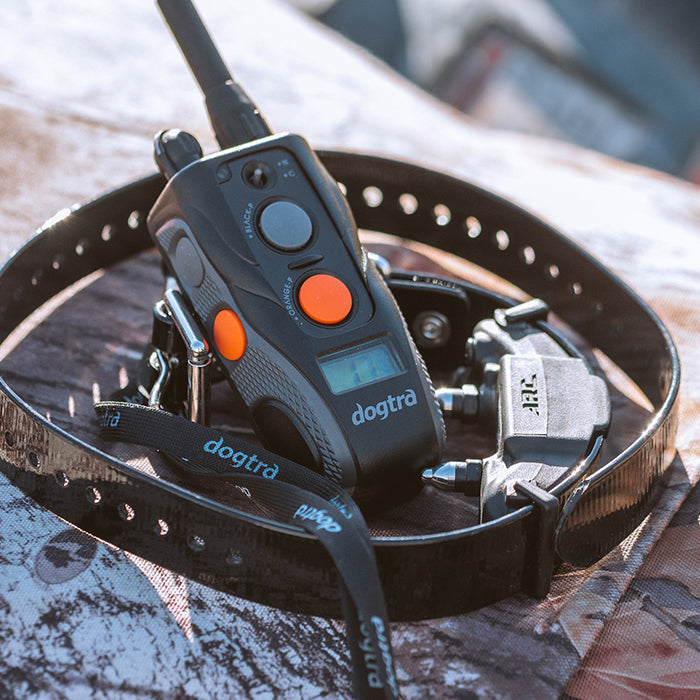NICK, CONSTANT, OR PAGER....WHICH BUTTON SHOULD YOU USE? (PART 1)

In the last couple decades, remote collars have evolved into sophisticated training tools. They provide users with a variety of functions and numerous ways to use them. All the options might feel overwhelming for a new user, so I am going to break down the main functions and suggest several ways to put them to use.
But first, let me mention that one of the leading reasons I prefer the Dogtra brand of remote collars is their overall simplicity. In a tech-rich world that offers a dizzying array of choices, Dogtra maintains a balance between finesse suited for professional use with simplicity of design that is easily understood.
Dogtra models offer both Momentary (Nick) and Continuous options for applying stimulation. The difference between the two is the duration of sensation. The Nick button emits only a fraction of a second of sensation regardless of how long the button is depressed. The Continuous function will maintain sensation for however long the button is held, up to a maximum of 12 seconds. The intensity of the sensation is controlled by a separate dial on the remote. Dialing up or down according to the dog’s individual level of sensitivity is a crucial skill to learn for anyone training with an e-collar.
There is also a Pager (Vibration) function on the Dogtra products. The Pager is a vibrating sensation created by activating a rocker mechanism inside the receiver. *
Let’s take a look at ways to use these 3 main features.
The vibration function is often viewed as a less aversive alternative to stimulation. However, I encourage users to consider the dog’s point of view rather than fall prey to potential emotional bias about stimulation, aka “shock”.
I suspect any person that routinely uses the word shock rather than stim or e-stim is quite likely to regard vibration as less aversive. The emotional bias creates a training mindset that reserves the use of “shock” for behaviors the handler considers more nefarious. i.e. “My dog was so stubborn, I had to shock him to get him to stop!”
However, the vibration function isn’t always less aversive to the dog. It depends on the dog in question. I’ve trained numerous dogs that find the abrupt shaking sensation of the pager far more startling than a low level stim. Because the vibration is not variable in intensity, it cannot be dialed down the way that stimulation can and for some dogs it is just too much. Always remember, it is only the dog’s perception that counts, not the humans!
Therefore, the choice of how to use the Pager is dictated by the dog’s response to it. If the dog is startled by vibration, it could be reserved for those serious moments when the handler wishes to create a strong aversive response. I’ve trained a couple dogs with a significant startle response to vibration by using it to inhibit coprophage and marking behaviors.
It should go without saying that anytime you’re using training techniques that employ a significant aversive consequence with a behavior, you must practice good timing. Do your best to time the aversive consequence just as the dog displays the behavior or, even better, the 1 second before the behavior happens, while the dog is thinking about it! More often than not in these specific training situations, you don’t want to say anything to the dog. You want them to believe their action caused the consequence and you had nothing to do with it. Your goal with issues like poop eating or marking is to teach your dog to self-regulate if possible.
If the dog is sensitive to vibration but not overly averse to it, it could be used for a number of meanings. It could be used to interrupt nuisance behaviors like jumping up, or inappropriate chewing or could be used as a unique cue. For instance, you could teach that the Pager sensation = return to you; a recall cue that could be used in place of a verbal one. I’ve taught this with several working K9’s for handlers that need a recall when they don’t want to use an audible one. For deaf dogs, I’ve trained the Pager function as a “look at me” cue.
Keep in mind, if vibration is trained as a unique cue, it should NOT be used for any other training purpose or it will confuse the dog.
The Pager can also be conditioned as a reward marker for those dogs that are indifferent to the sensation. That technique might be helpful if you’re working the dog at a distance and you need to communicate moments of accuracy and reward.
Some trainers use the vibration (or Tone) as a precursory warning to use of the stimulation. They are essentially “warning” the dog by providing advance notice that the stim will be applied if they do not comply with command.
While I don’t believe there is anything inherently wrong with this technique, I do think it is a residual thought process from training techniques of decades ago. The limitations of the older equipment created limitations in how the remote training collars were used. We have so much more finesse at our disposal now. There just isn’t a need to warn, when we can simply enforce with a lower level of stim and teach our dogs the ability to avoid sensation all together by complying with the first verbal cue.
To be continued...




